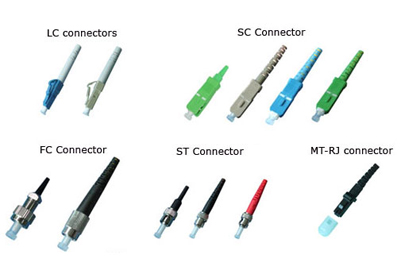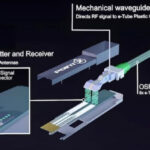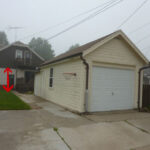Fiber optic connectors are essential components in modern networking and telecommunications. They allow fiber optic cables to connect quickly and reliably, making them vital for data centers, enterprise networks, and telecom systems. Among the many types available, SC, LC, and FC connectors are the most widely used.
If you’ve ever wondered which connector is right for your application, this guide explains their meaning, differences, advantages, and best use cases.

fiber optic connectors
What Is a Fiber Optic Connector?
A fiber optic connector is a device that terminates the end of a fiber optic cable and enables quick connection or disconnection without splicing. The key performance indicators of any connector are:
Low insertion loss (minimal signal loss when connecting)
High return loss (minimal signal reflection)
Durability and reliability for long-term use
The three most common types — SC, LC, and FC connectors — differ in design, size, and application.
SC Connector (Subscriber Connector)
Full Name: Subscriber Connector or Standard Connector
Design: Push-pull locking mechanism, square shape
Ferrule Size: 2.5 mm ceramic ferrule
Applications: Data centers, telecom, CATV (cable TV)
Advantages:
Simple push-pull design makes it easy to use
Cost-effective and widely available
Good performance for single-mode and multimode fibers
Limitations:
Larger size compared to LC
Not ideal for very high-density installations
👉 SC cables are still common in legacy networks and many telecom systems.
LC Connector (Lucent Connector)
Full Name: Lucent Connector (sometimes called Little Connector)
Design: Smaller form factor with latch mechanism
Ferrule Size: 1.25 mm ceramic ferrule
Applications: Data centers, enterprise LANs, high-density patch panels
Advantages:
Compact design allows high-density connections
Excellent performance with low insertion loss
Industry standard for modern data centers and telecom systems
Limitations:
Slightly more expensive than SC
More delicate latch design requires careful handling
👉 LC connectors have become the standard in high-speed networks (10G, 40G, 100G), especially in space-constrained environments like racks and patch panels.
FC Connector (Ferrule Connector)
Full Name: Ferrule Connector
Design: Screw-on threaded connection
Ferrule Size: 2.5 mm ceramic ferrule
Applications: Test equipment, long-haul networks, industrial settings
Advantages:
Very secure connection due to threaded design
High precision and stability in lab/test environments
Reliable for single-mode long-distance transmission
Limitations:
Slower to connect/disconnect compared to SC and LC
Bulkier, less common in modern data centers
👉 FC connectors are now less common in commercial networks but remain popular in industrial, laboratory, and long-haul telecom.
SC vs. LC vs. FC: Quick Comparison
| Feature | SC Connector | LC Connector | FC Connector |
|---|---|---|---|
| Ferrule Size | 2.5 mm | 1.25 mm | 2.5 mm |
| Design | Push-pull | Latch | Screw-on |
| Size | Medium | Compact (high-density) | Large |
| Best For | Telecom, legacy networks | Data centers, enterprise, high-speed | Test labs, industrial, long-haul |
| Popularity | Common in older systems | Standard in modern systems | Specialized |
Which Connector Should You Choose?
Choose LC if you need high-density connections in a modern data center or enterprise network.
Choose SC if you are working with existing legacy infrastructure or cost-sensitive projects.
Choose FC if your application requires secure, stable connections in lab or industrial environments.
Final Thoughts
When comparing SC vs. LC vs. FC connectors, the LC connector has become the most popular choice for modern high-speed networks due to its compact size and excellent performance.
If you’re planning a new installation or upgrading your infrastructure, investing in LC cables and patch cords ensures compatibility with today’s networking standards and future scalability.
👉 Looking for high-quality LC cables? Explore our LC to LC Fiber Patch Cables for single-mode and multimode applications, available in multiple lengths and jacket types.





